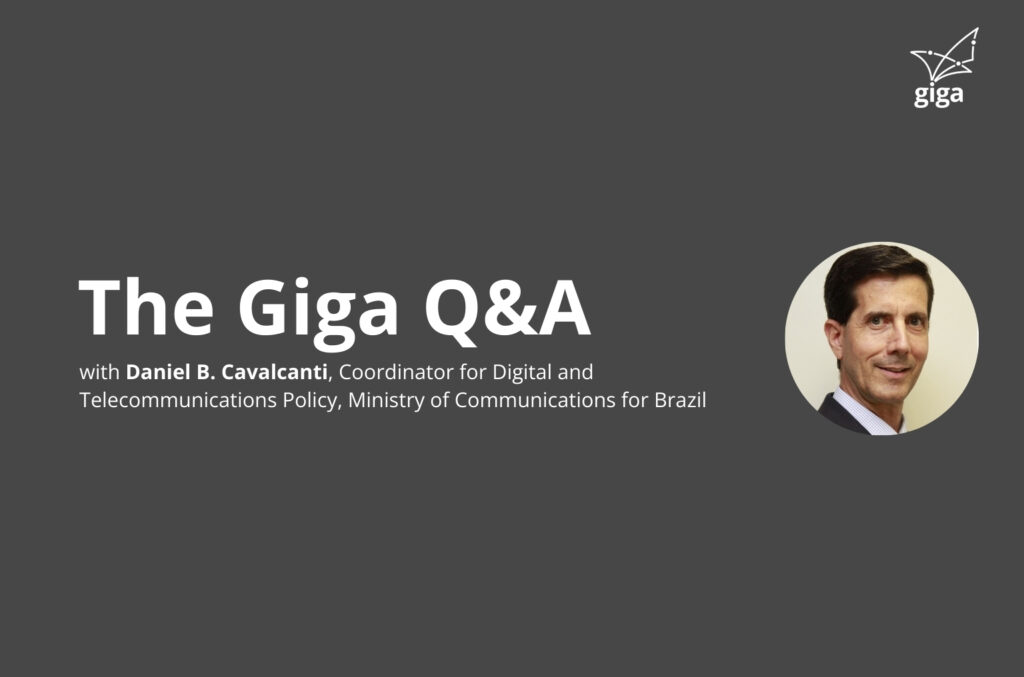Until recently, Daniel B. Cavalcanti was the Coordinator for Digital and Telecommunications Policy at the Ministry of Communications for Brazil. He led the G20 Digital Economy Working Group (DEWG) during the G20 presidency of Brazil (2024), which reached consensus on key issues in today’s digital economy, from new indicators for the measurement of “meaningful connectivity” to AI readiness and capacity assessment. These issues will continue to be a focus under South Africa’s G20 presidency in 2025.
1) As part of its focus on connectivity as a prerequisite for digital transformation and equal opportunity, the Brazilian G20 presidency supported the ITU’s Digital Infrastructure Investment Initiative (DIII). Why is DIII a valuable initiative?
The digital economy is the new dynamic pillar of the global economy. However, providing digital connectivity remains a challenge in many places. In 2024, one third of the world population does not yet have access to the internet. The question is: how can we make significant progress in “connecting the unconnected” and “ensuring that no one is left behind,” in line with the goals and targets of the 2030 Agenda for Sustainable Development. The DIII Working Group, with the participation of ITU, development finance institutions, governments and consultants, has a novel approach to this challenge, that involves understanding this financing gap, establishing a country assessment framework, and identifying innovative financing mechanisms that have proven successful in closing the connectivity gap or have the potential to do so.
2) The DIII Working Group generated many ideas on digital infrastructure finance. Are there some specific ideas that you find especially promising?
The adoption of public-private partnerships (PPP) seems to have great potential to advance digital infrastructure financing. Governments need digital connectivity infrastructure to provide digital public services (e.g., in public safety, schools and hospitals). The private sector, in turn, is looking at expanding their client base in telecommunications and digital services. To be successful, digital infrastructure projects need to focus not only on capital expenditures (CapEx) for deployment, but also on operating expenses (OpEx) for long-term sustainability. Brazil has successfully adopted the PPP model for digital infrastructure expansion in the Amazon Region. The financing model involves leveraging revenue from spectrum auctions for government CapEx in digital infrastructure, while establishing private consortiums of telecom operators and internet service providers that commit to the long-term OpEx of this digital infrastructure in exchange for the use of fiber capacity.
3) Brazil has made great strides in connecting its schools to the internet. What are the main reasons behind that success?
Brazil is developing the Connected Schools program, a key public policy which will connect all 140,000 public schools in the country, both urban and rural, creating the conditions for the digital transformation of the learning process and education in the country. The program involves investment in providing internet connectivity to the schools and equipping the classrooms. The program is conducted in collaboration with several stakeholders and international organizations. Funding is made possible through the repurposing of the Universal Services Fund and leveraging part of the proceeds from the 5G Spectrum Auction (2021). Internet connectivity in Connected Schools is mapped in real-time by the Brazilian Government, as reflected in Giga Maps, with data coming from each school. The data feeds a geolocated database with detailed information on each school, showing the number of students, connection quality and whether the internet is used in the classroom for teaching. Giga Maps shows that today in Brazil over 121,000 public schools are already connected to the internet, out of a total of 137,000 public schools mapped in the country. The average internet download speed is 125 Mbps per school. The aim is to connect all public schools in Brazil by 2026.
4) How important is school connectivity to the overall goal of bridging the digital divide and promoting greater social and economic development?
Digital literacy in schools has benefits that extend beyond the classroom into society as a whole. A high proportion of unconnected people do have internet coverage where they live, but don’t know how to use the internet to achieve social and economic advancement. Now with Connected Schools students can bring home digital skills and spread this knowledge at home. Digital skills allow people to share the benefits of the digital transformation of government through access to goods, services and opportunities for work, as well as the digital transformation of society in a new space for participation, access to culture and leisure.

